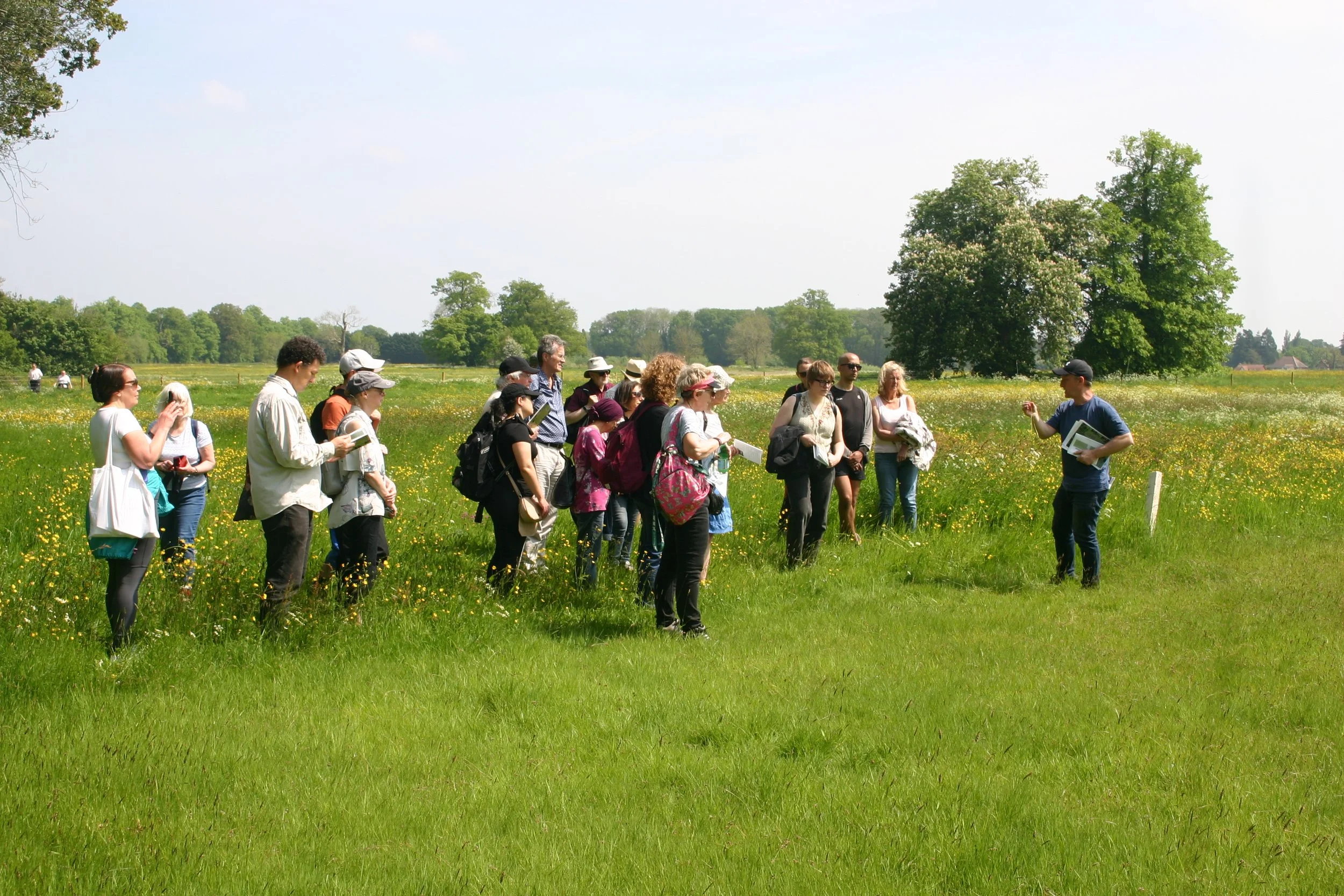As part of our ongoing partnership, ECT and the Royal Society of Biology (RSB) collaborated to host a site visit to the Park Grass long-term experiment managed by Rothamsted Research. A member of the RSB’s London branch, Patrizia Ferretti (UCL), writes about her perspective on the visit during some welcome May sunshine.
I visited Park Grass, the oldest experiment monitoring grassland in the world, in a visit organised by our branch of the Royal Society of Biology in conjunction with the Ecological Continuity Trust (ECT) in May.
As an animal cell biologist working mainly with cells in a dish, my knowledge of what is going on in the “plant world” is rather limited, though its importance cannot certainly escape anybody’s attention in these times when the issue of climate change, and the importance of plants to the survival of our planet, and for food security, is finally coming to the forefront not only for the experts. I found the visit to Park Grass very enlightening as well as fun. I was expecting to find sophisticated equipment in the fields, and indeed there was, but just a small shack to sustain the operation. I discovered the state-of-the art Rothamsted small campus that also hosts the fascinating Rothamsted Sample Archive storing specimens that go back to the beginning of this long-lasting experiment in 1856.
visitors to the park grass plots listening to jonathan storkey from rothamsted research
From left to right: Keith GOULding, jonathan storkey and andy gregory from rothamsted research
After a lovely picnic enjoying the views of the campus, we started the tour with a general introduction to the site by Keith Goulding (ECT’s Deputy Chairman and formerly of Rothamsted Research), followed by an introduction to the ECT by Ben Sykes (MRSB), its Executive Director, and Danae Dodge (MRSB), the Communications Officer of the ECT who had been pivotal to the organisation of this great visit. Jonathan Storkey and Andy Gregory (Rothamsted Research), and Keith Goulding then took over. We then had a guided tour of the fields observing the effect of fertilisers on the type of vegetation, how it is favoured by different soil conditions, and of the stations where different types of samples to generate data on changes in insect populations, plant species, soil and water composition, as well changes in temperature are collected. I really appreciated the information that all our guides provided, each displaying an overall great knowledge of the project as well as in-depth knowledge in their specific areas of expertise, and how they patiently and most satisfactorily answered all our questions. The tour ended with the visit to the archives that has the most amazing collection of jars containing soil and plant samples (as well as bovine blood used as a fertiliser in 1849 on Broadbalk, the ‘sister’ experiment to Park Grass) that constitute an amazing resource for scientists across the world. All visitors in the group, who were from a wide age range and backgrounds enjoyed the visit, and I found it also really interesting talking to them, and learning about their respective areas of expertise and perspective on the grassland experiment.
Altogether, I found the visit to Park Grass instructive and fascinating as it really highlighted the importance of data collection and their integration over a long timescale, and I would strongly recommend it not only to biologists, but to anybody with an interest in the environment.
1849 bulls blood sample used as a fertiliser on broadbalk - the ‘sister’ experiment to park grass
Find out more about the Royal Society of Biology.





